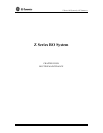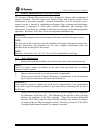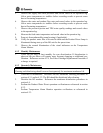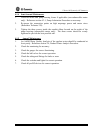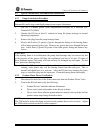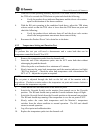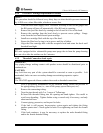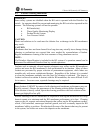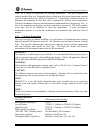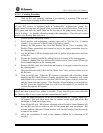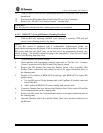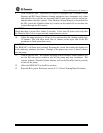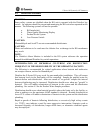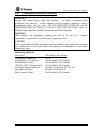
Z Series RO System by GE Osmonics
4.3 Z-Series Cleaning Indications
WARNING:
Some safety systems are disabled when the RO unit is operated with the Disinfect key
switch. An operator should be present and monitoring the RO unit when operated in this
manner. The following systems will not be operable:
a. RO Interlock(s)
b. Water Quality Monitoring Display
c. Product Divert System
d. Low Pressure Switch
CAUTION:
Water and solutions to be used must be chlorine free or damage to the RO membranes
may result.
CAUTION:
Membranes that have not been cleaned for a long time may actually incur damage during
cleaning as perforations are exposed that were masked by accumulations of foulant.
Regular maintenance cleaning is the best assurance of long membrane service.
NOTE:
If a Disinfect Alarm Monitor is included in the RO system it’s operation manual can be
referenced for additional Disinfect Start key switch operations.
Foulants such as minerals, silt and organic substances may collect on the RO membrane
surface and cause the RO membrane to foul and diminish in its function. Many of these
foulants are prevented by proper selection of pretreatment equipment, while others are
treatable only with more sophisticated designs. Regardless of the foulant, it is essential
to clean the membrane promptly once the need for cleaning is indicated. The longer a
foulant is allowed to remain in contact with the RO membrane, the more difficult it will
be to remove. In severe cases, repeated cleanings may be required.
NOTE:
Some foulants CANNOT be removed with cleaning and membrane performance may not
be fully restored. Observe the appearance of the cleaning solution before discarding it.
If the solution is heavily soiled, repeat the cleaning procedure with fresh solution of the
same type (high pH or low pH).
Routine cleaning of the RO membranes in conjunction with regular disinfection will keep
bacteria counts at a minimum and the RO membrane performance at its best. Cleaning
removes the silt, organic and mineral deposits that collect on the RO membrane surface,
which, if left untreated, encourages bacterial growth, and will eventually impair the RO
membranes' ability to perform. Disinfection kills most of the bacteria that may be present
in the system, but it does not remove the deposits on the membrane.
1238339b – 16Oct03 4 - 9 Routine Maintenance



